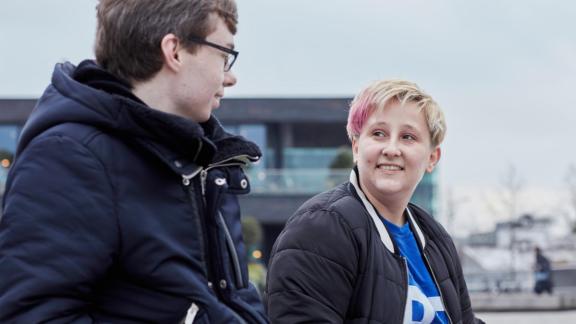Spotlight
A selection of stories from across the Federation
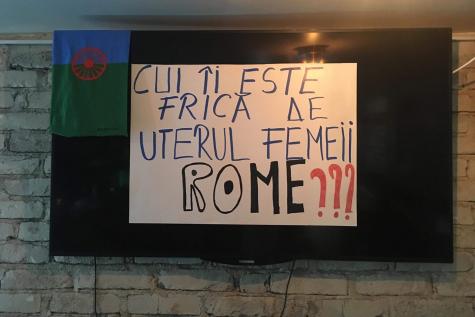
Romania
Roma Women in Romania Face Old and New Threats to Abortion Care Access
Roma women and girls face multiple barriers to abortion care in Romania. Far more needs to be done to protect their rights, says Roxana-Magdalena Oprea of E-Romnja.
Most Popular This Week
Romania
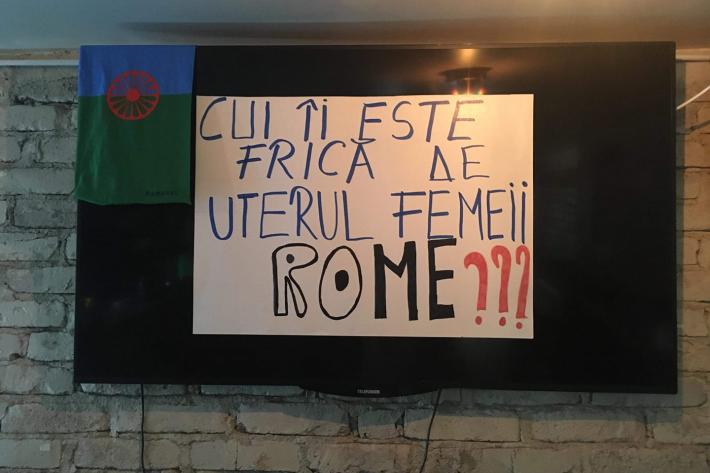
Roma Women in Romania Face Old and New Threats to Abortion Care Access
For Roma women and girls in Romania, the struggle to access abortion care brings them into contact with horrific levels of racism and discrimination, hardw
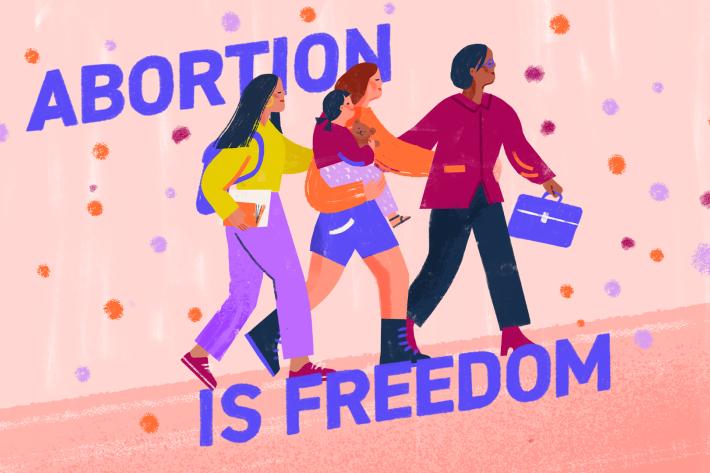
Croatia: Obstacles to abortion care make access virtually non-existent
Hitting the road in the desperate search for abortion care
Romania
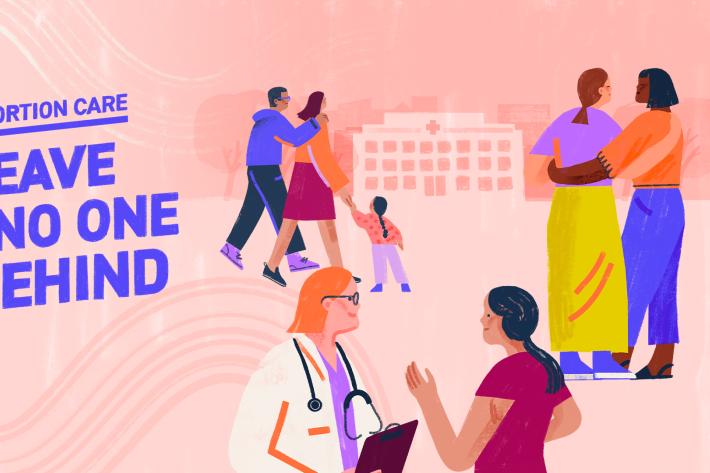
High costs and broken health system freeze many out of abortion care in Romania
On paper, abortion care is legal up to 14 weeks in Romania – though only free in emergencies – and should be provided by all hospitals with obstetrics and gynaecology departments.
Germany
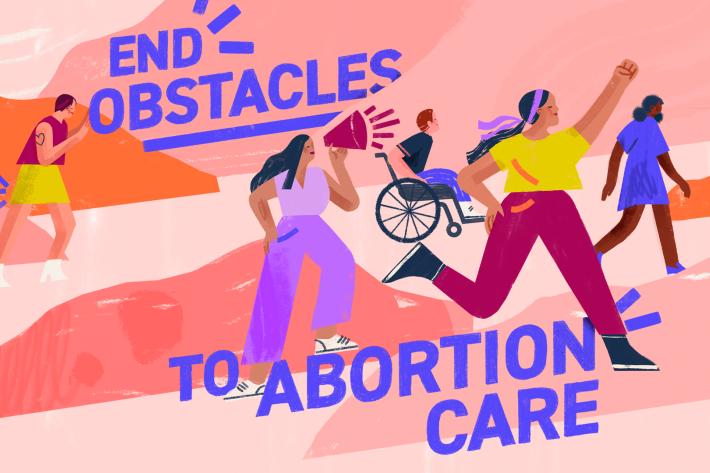
Germany's archaic abortion law creates huge burden for people needing care
For a country long reputed to have one of the more progressive healthcare systems in Europe, Germany’s law on abortion – a health issue affecting millions of people – remains firm
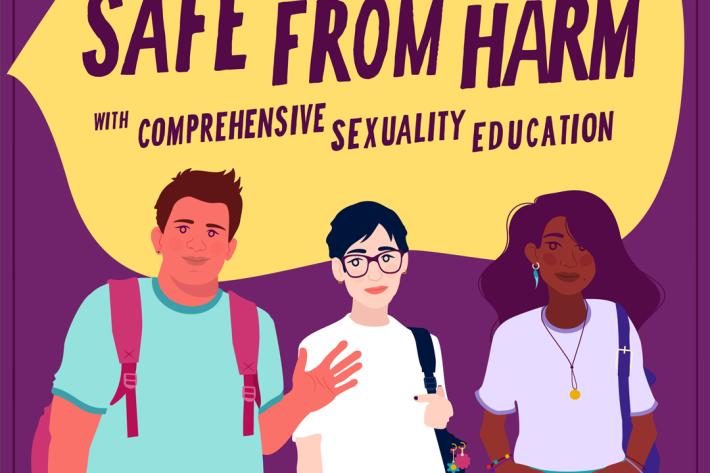
Sexuality education keeps young people safe from harm
Comprehensive sexuality and relationship education is a vital prevention tool in the fight
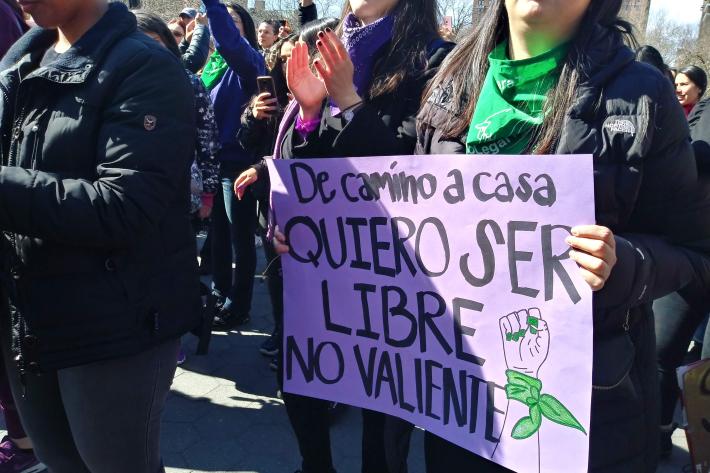
Legislating the path to consent: Spain's Yes Means Yes law
‘Everyone has the right to live without violence. You can have sex without love, but always with care’.

Anything less than yes is rape: the campaign for a consent-based rape law in Sweden
The absence of a ‘no’ is not an implicit yes. This is the overarching principle of a long-fought Swedish ‘consent law’ aimed at disman
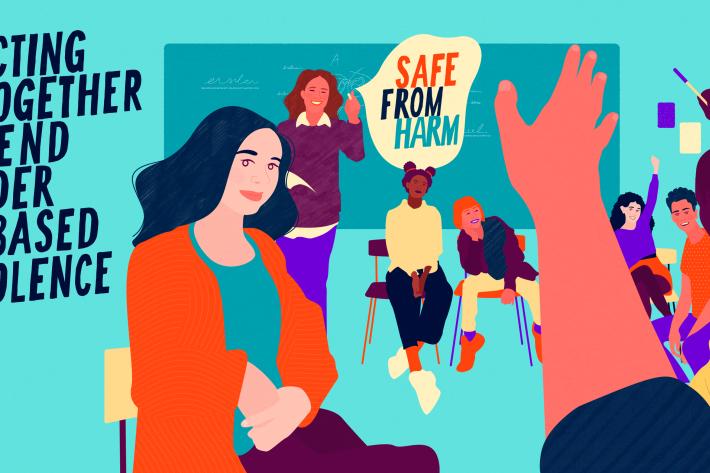
Belgium’s consent law is clear: Absence of no doesn’t mean yes
‘Rape isn’t always something that happens when you are dragged into an alleyway’, says Heleen Heysse, Policy Officer at
Filter our stories by:


| 13 October 2022
"It would make a real difference if we could be open with health professionals about what really concerns us."
We spoke to young people from the Western Balkans about how their access to sexual and reproductive health and rights was affected by the COVID pandemic, and asked them about their vision for re-designing a more youth-friendly future in which young people can flourish. Alex is a 19-year-old LGBTIQ girl, studying at university in Blagoevgrad, Bulgaria. As a peer educator, she supports other young people to learn and develop crucial life skills relating to their sexual and reproductive health. Alex, describe your experience of access to SRHR* education, information and care before and during COVID. My access to sexual and reproductive healthcare before COVID was relatively normal, for example a gynaecologist visit, but during the pandemic, it was rather harder to go because I had to present a negative COVID test to be examined. At some point, in-person consultations with doctors were extremely limited, unless it was with reference to COVID or life-threatening - so regular check-ups were not really happening. I didn’t receive any adequate sexuality education either before or during the pandemic. The only time sexual health was discussed in my 12 years of schooling was back in elementary school and it only included only a talk with the girls on menstrual pads and periods. I believe online information became more accessible because of COVID. As a result of the limited consultations with professionals, more people sought answers on the Internet. Of course, we must keep in mind that information has to be checked carefully. Also, reliable information in Bulgarian is very limited. Did anything change for the better during the pandemic in terms of access to SRHR? I suppose more information regarding SRHR became available online because of the huge demand. A good thing is that the information is still relevant today even though COVID is no longer an urgent crisis. Personally, I got into the habit of looking for answers myself and checking if the source was reliable or not. Other than that, I would not say that COVID had any positives. What was the biggest challenge to young people’s SRHR during the pandemic? How could decision-makers/medical professionals have removed this obstacle? One of the biggest problems was the misleading and unreliable sources of information about sexual and reproductive health. In addition, adequate information is mostly in English. I believe a fact-checking system to verify all factual information could be helpful in preventing the spread of misinformation. I faced that problem when I and other 3 friends conducted a few educational workshops on the topic of comprehensive sexuality education. While putting together the information we needed, we came across numerous invalid data and false statements. What lessons should governments and professionals who work with youth learn from the pandemic about how to look after young people’s health and wellbeing in a crisis? From what I have seen, many adults do not seem to understand the burden this crisis has had on us and therefore neglect our mental health. Affordable and regular psychologist appointments should be a priority. There is this stigma around mental health that you seek help only if you are “not normal”. That is completely false and puts our generation under pressure and makes us not take proper care of our well-being (which often includes going to a psychologist). Also, many of the professionals (both teachers and medical practitioners) were sharing their personal and controversial opinion on the pandemic and vaccinations which has to be limited. A personal experience I had was when I went to get vaccinated and my GP would not allow me to, saying that it was unnecessary and even “dangerous”. What is your number 1 recommendation on what is needed to make services more youth-friendly? What difference would this make in the life of a young person like you? More young and inclusive professionals working in the sphere are needed. For example, many of my female peers insist that female gynecologists examine them. LGBT+ inclusivity is also important, as currently many of us cannot share a key part of our life neither with a gynecologist nor a psychologist. The difference would be that we will be more open and share what really concerns us so we can seek adequate help. It is much easier to talk to someone close to your age or background. What helped you to become engaged as an activist? How has this experience been so far? The idea that I can do something about the desperate need for a change and make my voice heard was what helped me get involved. So far, I mostly enjoy working with other young people and seeing them as determined and hopeful as I am. Every new idea has been welcomed with enthusiasm and encouragement by many of my peers, which makes it clear that youngsters are looking forward to a change and improvement. However, as I mentioned, we held several workshops about comprehensive sexuality education and we faced many obstacles. The project was very scarcely funded, which made it very hard to implement properly and exactly how we have envisioned it. Also, finding people to attend the workshops was fairly hard as well and we could not get any support from our teachers and school staff. They did not welcome the idea because the topics of sexual health and LGBT+ inclusivity are still taboo in our society - so they were scared of how the parents would react. On the other hand, the people that came to the workshops had very encouraging feedback and even a demand for more similar events. * SRHR = sexual and reproductive health and rights Interview conducted by Viktoria Nikolova, a member of the regional youth group of the IPPF EN project Youth Voices, Youth Choices, funded by MSD for Mothers

| 25 October 2022
"It would make a real difference if we could be open with health professionals about what really concerns us."
We spoke to young people from the Western Balkans about how their access to sexual and reproductive health and rights was affected by the COVID pandemic, and asked them about their vision for re-designing a more youth-friendly future in which young people can flourish. Alex is a 19-year-old LGBTIQ girl, studying at university in Blagoevgrad, Bulgaria. As a peer educator, she supports other young people to learn and develop crucial life skills relating to their sexual and reproductive health. Alex, describe your experience of access to SRHR* education, information and care before and during COVID. My access to sexual and reproductive healthcare before COVID was relatively normal, for example a gynaecologist visit, but during the pandemic, it was rather harder to go because I had to present a negative COVID test to be examined. At some point, in-person consultations with doctors were extremely limited, unless it was with reference to COVID or life-threatening - so regular check-ups were not really happening. I didn’t receive any adequate sexuality education either before or during the pandemic. The only time sexual health was discussed in my 12 years of schooling was back in elementary school and it only included only a talk with the girls on menstrual pads and periods. I believe online information became more accessible because of COVID. As a result of the limited consultations with professionals, more people sought answers on the Internet. Of course, we must keep in mind that information has to be checked carefully. Also, reliable information in Bulgarian is very limited. Did anything change for the better during the pandemic in terms of access to SRHR? I suppose more information regarding SRHR became available online because of the huge demand. A good thing is that the information is still relevant today even though COVID is no longer an urgent crisis. Personally, I got into the habit of looking for answers myself and checking if the source was reliable or not. Other than that, I would not say that COVID had any positives. What was the biggest challenge to young people’s SRHR during the pandemic? How could decision-makers/medical professionals have removed this obstacle? One of the biggest problems was the misleading and unreliable sources of information about sexual and reproductive health. In addition, adequate information is mostly in English. I believe a fact-checking system to verify all factual information could be helpful in preventing the spread of misinformation. I faced that problem when I and other 3 friends conducted a few educational workshops on the topic of comprehensive sexuality education. While putting together the information we needed, we came across numerous invalid data and false statements. What lessons should governments and professionals who work with youth learn from the pandemic about how to look after young people’s health and wellbeing in a crisis? From what I have seen, many adults do not seem to understand the burden this crisis has had on us and therefore neglect our mental health. Affordable and regular psychologist appointments should be a priority. There is this stigma around mental health that you seek help only if you are “not normal”. That is completely false and puts our generation under pressure and makes us not take proper care of our well-being (which often includes going to a psychologist). Also, many of the professionals (both teachers and medical practitioners) were sharing their personal and controversial opinion on the pandemic and vaccinations which has to be limited. A personal experience I had was when I went to get vaccinated and my GP would not allow me to, saying that it was unnecessary and even “dangerous”. What is your number 1 recommendation on what is needed to make services more youth-friendly? What difference would this make in the life of a young person like you? More young and inclusive professionals working in the sphere are needed. For example, many of my female peers insist that female gynecologists examine them. LGBT+ inclusivity is also important, as currently many of us cannot share a key part of our life neither with a gynecologist nor a psychologist. The difference would be that we will be more open and share what really concerns us so we can seek adequate help. It is much easier to talk to someone close to your age or background. What helped you to become engaged as an activist? How has this experience been so far? The idea that I can do something about the desperate need for a change and make my voice heard was what helped me get involved. So far, I mostly enjoy working with other young people and seeing them as determined and hopeful as I am. Every new idea has been welcomed with enthusiasm and encouragement by many of my peers, which makes it clear that youngsters are looking forward to a change and improvement. However, as I mentioned, we held several workshops about comprehensive sexuality education and we faced many obstacles. The project was very scarcely funded, which made it very hard to implement properly and exactly how we have envisioned it. Also, finding people to attend the workshops was fairly hard as well and we could not get any support from our teachers and school staff. They did not welcome the idea because the topics of sexual health and LGBT+ inclusivity are still taboo in our society - so they were scared of how the parents would react. On the other hand, the people that came to the workshops had very encouraging feedback and even a demand for more similar events. * SRHR = sexual and reproductive health and rights Interview conducted by Viktoria Nikolova, a member of the regional youth group of the IPPF EN project Youth Voices, Youth Choices, funded by MSD for Mothers

| 12 October 2022
"Governments & health professionals need to give young people more opportunities."
We spoke to young people from the Western Balkans about how their access to sexual and reproductive health and rights was affected by the COVID pandemic, and asked them about their vision for re-designing a more youth-friendly future in which young people can flourish. Greis Osmani is a 23-year-old from Tirana, Albania. She is a medical student, peer educator and activist for young people’s sexual and reproductive health and rights. Greis, describe your experience of access to SRHR* education, information and care before and during COVID. Before the pandemic, I used to take part in a lot of workshops, projects and volunteer work in national NGOs. As a volunteer, especially with the Albanian Center for Population and Development (ACPD), I was trained in subjects like abortion stigma, gender equality and rights, contraceptive methods and sexuality education. I was well informed about other topics such as HIV/AIDS. The first year of the pandemic, the focus of the government and NGOs etc shifted more towards COVID and general health issues, not related to SRHR. Step by step, young people and the general public started getting used to online platforms, which gave us other opportunities to hold trainings online and carry on sharing safe information with other youth. Did anything change for the better during the pandemic in terms of access to SRHR? I believe it had pros and cons. First, we had to learn how to properly use new digital platforms and tools such as Zoom, Google Classroom and Meet, and add more interesting activities such as Murals and Quizzes. This made our online experience much more fun, aside from basic informative meetings, and we continue to use these platforms. Online platforms enable us to create a broader network of young people from different countries who connect more quickly, and for free, to share personal experiences as SRHR activists and empower one another. We are still learning and developing digital communication skills. We hope the moment will come when all young people feel comfortable using online tools, without facing a single barrier. What was the biggest challenge for SRHR during the pandemic? One of the biggest challenges I personally faced was the inability to express myself freely online and completely share personal experiences. Face-to-face meetings connect young people more with one another. One feels freer to talk with peers in person rather than share with those you may never meet in real life. It’s hard to break the ice in digital meetings that make people feel uncomfortable speaking directly and opening up. Also, it is very important that, as educators, the things we share in theory with other peers come to life in practical ways. For example, online we can’t distribute free condoms, and it’s harder to teach young people how to use them correctly. What lessons should governments and professionals who work with youth learn from the pandemic about how to look after young people’s health and wellbeing in a crisis? They need to understand the realities of young people’s access to SRHR, the gaps we face, our needs etc. They need to carry out more surveys to see how young people are coping with all the changes since the pandemic. They need to give us youngsters more opportunities to raise our voices, to engage in activities, to work as volunteers, to give us more hope for our future. It’s extremely hard for a teenager to stay at home distancing him/herself from everyday life and joy. COVID-19 was devastating for young people and had a big impact on their perspectives on life and desire to do more. Mental health was affected. Young people need to be able to maintain a healthy life, to experience happiness, and to invest in their future to become good doctors, lawyers, engineers and so on, to build a better lifestyle. Social connections and communication are key to mental health - that’s why creating safe platforms with adequate and necessary information for young people’s needs is crucial for their well-being. What is your number 1 recommendation on what is needed to make services more youth-friendly? For services to be youth-friendly, it is crucial to build trust between young people and health professionals. Youth-friendly services are included in our primary health care package and are provided by other private institutions and NGOs such as ACPD through its own clinics. However, trust and communication need to be built. The role of health mediators is also very important, especially if they are young themselves. This facilitates communication with youth as it is easier to share with someone your age; you feel more understood and can open up when the service is presented in a friendly way. It’s also important to create positive environments where young people can engage with each other, for example reading or studying in groups to make it less hard for them to express their true selves. It makes a big difference when a young person finds a reliable service, and seeks help when they are feeling lost. So social workers and innovative communication methods in my opinion are the key. Tell us about your experience as an activist for young people's health and rights! My experience has been great. It started in high school taking part in a social experiment and then I got more interested in topics like human rights, comprehensive sexuality education and SRH. I have learned so much from people I met during my activism years, I feel like my public speaking skills have gotten better with time. I have found subjects like SRHR which I feel are close to me because I’m about to become a doctor next year and my contribution started long ago in young people’s health. I’m constantly inspired by different projects to keep doing what I am doing now and create a stronger and empowered future for next generations here in my country Albania and beyond. I am happy that I have found role models in this journey of mine, I have heard speeches that are quotes for me to live by. I am grateful that there have been individuals that have pushed me to do better and engage more. I’m looking forward to the next chapters... * SRHR = sexual and reproductive health and rights Interview conducted by Marjo Rabiaj, a member of the regional youth group of the IPPF EN project Youth Voices, Youth Choices, funded by MSD for Mothers

| 25 October 2022
"Governments & health professionals need to give young people more opportunities."
We spoke to young people from the Western Balkans about how their access to sexual and reproductive health and rights was affected by the COVID pandemic, and asked them about their vision for re-designing a more youth-friendly future in which young people can flourish. Greis Osmani is a 23-year-old from Tirana, Albania. She is a medical student, peer educator and activist for young people’s sexual and reproductive health and rights. Greis, describe your experience of access to SRHR* education, information and care before and during COVID. Before the pandemic, I used to take part in a lot of workshops, projects and volunteer work in national NGOs. As a volunteer, especially with the Albanian Center for Population and Development (ACPD), I was trained in subjects like abortion stigma, gender equality and rights, contraceptive methods and sexuality education. I was well informed about other topics such as HIV/AIDS. The first year of the pandemic, the focus of the government and NGOs etc shifted more towards COVID and general health issues, not related to SRHR. Step by step, young people and the general public started getting used to online platforms, which gave us other opportunities to hold trainings online and carry on sharing safe information with other youth. Did anything change for the better during the pandemic in terms of access to SRHR? I believe it had pros and cons. First, we had to learn how to properly use new digital platforms and tools such as Zoom, Google Classroom and Meet, and add more interesting activities such as Murals and Quizzes. This made our online experience much more fun, aside from basic informative meetings, and we continue to use these platforms. Online platforms enable us to create a broader network of young people from different countries who connect more quickly, and for free, to share personal experiences as SRHR activists and empower one another. We are still learning and developing digital communication skills. We hope the moment will come when all young people feel comfortable using online tools, without facing a single barrier. What was the biggest challenge for SRHR during the pandemic? One of the biggest challenges I personally faced was the inability to express myself freely online and completely share personal experiences. Face-to-face meetings connect young people more with one another. One feels freer to talk with peers in person rather than share with those you may never meet in real life. It’s hard to break the ice in digital meetings that make people feel uncomfortable speaking directly and opening up. Also, it is very important that, as educators, the things we share in theory with other peers come to life in practical ways. For example, online we can’t distribute free condoms, and it’s harder to teach young people how to use them correctly. What lessons should governments and professionals who work with youth learn from the pandemic about how to look after young people’s health and wellbeing in a crisis? They need to understand the realities of young people’s access to SRHR, the gaps we face, our needs etc. They need to carry out more surveys to see how young people are coping with all the changes since the pandemic. They need to give us youngsters more opportunities to raise our voices, to engage in activities, to work as volunteers, to give us more hope for our future. It’s extremely hard for a teenager to stay at home distancing him/herself from everyday life and joy. COVID-19 was devastating for young people and had a big impact on their perspectives on life and desire to do more. Mental health was affected. Young people need to be able to maintain a healthy life, to experience happiness, and to invest in their future to become good doctors, lawyers, engineers and so on, to build a better lifestyle. Social connections and communication are key to mental health - that’s why creating safe platforms with adequate and necessary information for young people’s needs is crucial for their well-being. What is your number 1 recommendation on what is needed to make services more youth-friendly? For services to be youth-friendly, it is crucial to build trust between young people and health professionals. Youth-friendly services are included in our primary health care package and are provided by other private institutions and NGOs such as ACPD through its own clinics. However, trust and communication need to be built. The role of health mediators is also very important, especially if they are young themselves. This facilitates communication with youth as it is easier to share with someone your age; you feel more understood and can open up when the service is presented in a friendly way. It’s also important to create positive environments where young people can engage with each other, for example reading or studying in groups to make it less hard for them to express their true selves. It makes a big difference when a young person finds a reliable service, and seeks help when they are feeling lost. So social workers and innovative communication methods in my opinion are the key. Tell us about your experience as an activist for young people's health and rights! My experience has been great. It started in high school taking part in a social experiment and then I got more interested in topics like human rights, comprehensive sexuality education and SRH. I have learned so much from people I met during my activism years, I feel like my public speaking skills have gotten better with time. I have found subjects like SRHR which I feel are close to me because I’m about to become a doctor next year and my contribution started long ago in young people’s health. I’m constantly inspired by different projects to keep doing what I am doing now and create a stronger and empowered future for next generations here in my country Albania and beyond. I am happy that I have found role models in this journey of mine, I have heard speeches that are quotes for me to live by. I am grateful that there have been individuals that have pushed me to do better and engage more. I’m looking forward to the next chapters... * SRHR = sexual and reproductive health and rights Interview conducted by Marjo Rabiaj, a member of the regional youth group of the IPPF EN project Youth Voices, Youth Choices, funded by MSD for Mothers

| 13 October 2022
"It would make a real difference if we could be open with health professionals about what really concerns us."
We spoke to young people from the Western Balkans about how their access to sexual and reproductive health and rights was affected by the COVID pandemic, and asked them about their vision for re-designing a more youth-friendly future in which young people can flourish. Alex is a 19-year-old LGBTIQ girl, studying at university in Blagoevgrad, Bulgaria. As a peer educator, she supports other young people to learn and develop crucial life skills relating to their sexual and reproductive health. Alex, describe your experience of access to SRHR* education, information and care before and during COVID. My access to sexual and reproductive healthcare before COVID was relatively normal, for example a gynaecologist visit, but during the pandemic, it was rather harder to go because I had to present a negative COVID test to be examined. At some point, in-person consultations with doctors were extremely limited, unless it was with reference to COVID or life-threatening - so regular check-ups were not really happening. I didn’t receive any adequate sexuality education either before or during the pandemic. The only time sexual health was discussed in my 12 years of schooling was back in elementary school and it only included only a talk with the girls on menstrual pads and periods. I believe online information became more accessible because of COVID. As a result of the limited consultations with professionals, more people sought answers on the Internet. Of course, we must keep in mind that information has to be checked carefully. Also, reliable information in Bulgarian is very limited. Did anything change for the better during the pandemic in terms of access to SRHR? I suppose more information regarding SRHR became available online because of the huge demand. A good thing is that the information is still relevant today even though COVID is no longer an urgent crisis. Personally, I got into the habit of looking for answers myself and checking if the source was reliable or not. Other than that, I would not say that COVID had any positives. What was the biggest challenge to young people’s SRHR during the pandemic? How could decision-makers/medical professionals have removed this obstacle? One of the biggest problems was the misleading and unreliable sources of information about sexual and reproductive health. In addition, adequate information is mostly in English. I believe a fact-checking system to verify all factual information could be helpful in preventing the spread of misinformation. I faced that problem when I and other 3 friends conducted a few educational workshops on the topic of comprehensive sexuality education. While putting together the information we needed, we came across numerous invalid data and false statements. What lessons should governments and professionals who work with youth learn from the pandemic about how to look after young people’s health and wellbeing in a crisis? From what I have seen, many adults do not seem to understand the burden this crisis has had on us and therefore neglect our mental health. Affordable and regular psychologist appointments should be a priority. There is this stigma around mental health that you seek help only if you are “not normal”. That is completely false and puts our generation under pressure and makes us not take proper care of our well-being (which often includes going to a psychologist). Also, many of the professionals (both teachers and medical practitioners) were sharing their personal and controversial opinion on the pandemic and vaccinations which has to be limited. A personal experience I had was when I went to get vaccinated and my GP would not allow me to, saying that it was unnecessary and even “dangerous”. What is your number 1 recommendation on what is needed to make services more youth-friendly? What difference would this make in the life of a young person like you? More young and inclusive professionals working in the sphere are needed. For example, many of my female peers insist that female gynecologists examine them. LGBT+ inclusivity is also important, as currently many of us cannot share a key part of our life neither with a gynecologist nor a psychologist. The difference would be that we will be more open and share what really concerns us so we can seek adequate help. It is much easier to talk to someone close to your age or background. What helped you to become engaged as an activist? How has this experience been so far? The idea that I can do something about the desperate need for a change and make my voice heard was what helped me get involved. So far, I mostly enjoy working with other young people and seeing them as determined and hopeful as I am. Every new idea has been welcomed with enthusiasm and encouragement by many of my peers, which makes it clear that youngsters are looking forward to a change and improvement. However, as I mentioned, we held several workshops about comprehensive sexuality education and we faced many obstacles. The project was very scarcely funded, which made it very hard to implement properly and exactly how we have envisioned it. Also, finding people to attend the workshops was fairly hard as well and we could not get any support from our teachers and school staff. They did not welcome the idea because the topics of sexual health and LGBT+ inclusivity are still taboo in our society - so they were scared of how the parents would react. On the other hand, the people that came to the workshops had very encouraging feedback and even a demand for more similar events. * SRHR = sexual and reproductive health and rights Interview conducted by Viktoria Nikolova, a member of the regional youth group of the IPPF EN project Youth Voices, Youth Choices, funded by MSD for Mothers

| 25 October 2022
"It would make a real difference if we could be open with health professionals about what really concerns us."
We spoke to young people from the Western Balkans about how their access to sexual and reproductive health and rights was affected by the COVID pandemic, and asked them about their vision for re-designing a more youth-friendly future in which young people can flourish. Alex is a 19-year-old LGBTIQ girl, studying at university in Blagoevgrad, Bulgaria. As a peer educator, she supports other young people to learn and develop crucial life skills relating to their sexual and reproductive health. Alex, describe your experience of access to SRHR* education, information and care before and during COVID. My access to sexual and reproductive healthcare before COVID was relatively normal, for example a gynaecologist visit, but during the pandemic, it was rather harder to go because I had to present a negative COVID test to be examined. At some point, in-person consultations with doctors were extremely limited, unless it was with reference to COVID or life-threatening - so regular check-ups were not really happening. I didn’t receive any adequate sexuality education either before or during the pandemic. The only time sexual health was discussed in my 12 years of schooling was back in elementary school and it only included only a talk with the girls on menstrual pads and periods. I believe online information became more accessible because of COVID. As a result of the limited consultations with professionals, more people sought answers on the Internet. Of course, we must keep in mind that information has to be checked carefully. Also, reliable information in Bulgarian is very limited. Did anything change for the better during the pandemic in terms of access to SRHR? I suppose more information regarding SRHR became available online because of the huge demand. A good thing is that the information is still relevant today even though COVID is no longer an urgent crisis. Personally, I got into the habit of looking for answers myself and checking if the source was reliable or not. Other than that, I would not say that COVID had any positives. What was the biggest challenge to young people’s SRHR during the pandemic? How could decision-makers/medical professionals have removed this obstacle? One of the biggest problems was the misleading and unreliable sources of information about sexual and reproductive health. In addition, adequate information is mostly in English. I believe a fact-checking system to verify all factual information could be helpful in preventing the spread of misinformation. I faced that problem when I and other 3 friends conducted a few educational workshops on the topic of comprehensive sexuality education. While putting together the information we needed, we came across numerous invalid data and false statements. What lessons should governments and professionals who work with youth learn from the pandemic about how to look after young people’s health and wellbeing in a crisis? From what I have seen, many adults do not seem to understand the burden this crisis has had on us and therefore neglect our mental health. Affordable and regular psychologist appointments should be a priority. There is this stigma around mental health that you seek help only if you are “not normal”. That is completely false and puts our generation under pressure and makes us not take proper care of our well-being (which often includes going to a psychologist). Also, many of the professionals (both teachers and medical practitioners) were sharing their personal and controversial opinion on the pandemic and vaccinations which has to be limited. A personal experience I had was when I went to get vaccinated and my GP would not allow me to, saying that it was unnecessary and even “dangerous”. What is your number 1 recommendation on what is needed to make services more youth-friendly? What difference would this make in the life of a young person like you? More young and inclusive professionals working in the sphere are needed. For example, many of my female peers insist that female gynecologists examine them. LGBT+ inclusivity is also important, as currently many of us cannot share a key part of our life neither with a gynecologist nor a psychologist. The difference would be that we will be more open and share what really concerns us so we can seek adequate help. It is much easier to talk to someone close to your age or background. What helped you to become engaged as an activist? How has this experience been so far? The idea that I can do something about the desperate need for a change and make my voice heard was what helped me get involved. So far, I mostly enjoy working with other young people and seeing them as determined and hopeful as I am. Every new idea has been welcomed with enthusiasm and encouragement by many of my peers, which makes it clear that youngsters are looking forward to a change and improvement. However, as I mentioned, we held several workshops about comprehensive sexuality education and we faced many obstacles. The project was very scarcely funded, which made it very hard to implement properly and exactly how we have envisioned it. Also, finding people to attend the workshops was fairly hard as well and we could not get any support from our teachers and school staff. They did not welcome the idea because the topics of sexual health and LGBT+ inclusivity are still taboo in our society - so they were scared of how the parents would react. On the other hand, the people that came to the workshops had very encouraging feedback and even a demand for more similar events. * SRHR = sexual and reproductive health and rights Interview conducted by Viktoria Nikolova, a member of the regional youth group of the IPPF EN project Youth Voices, Youth Choices, funded by MSD for Mothers

| 12 October 2022
"Governments & health professionals need to give young people more opportunities."
We spoke to young people from the Western Balkans about how their access to sexual and reproductive health and rights was affected by the COVID pandemic, and asked them about their vision for re-designing a more youth-friendly future in which young people can flourish. Greis Osmani is a 23-year-old from Tirana, Albania. She is a medical student, peer educator and activist for young people’s sexual and reproductive health and rights. Greis, describe your experience of access to SRHR* education, information and care before and during COVID. Before the pandemic, I used to take part in a lot of workshops, projects and volunteer work in national NGOs. As a volunteer, especially with the Albanian Center for Population and Development (ACPD), I was trained in subjects like abortion stigma, gender equality and rights, contraceptive methods and sexuality education. I was well informed about other topics such as HIV/AIDS. The first year of the pandemic, the focus of the government and NGOs etc shifted more towards COVID and general health issues, not related to SRHR. Step by step, young people and the general public started getting used to online platforms, which gave us other opportunities to hold trainings online and carry on sharing safe information with other youth. Did anything change for the better during the pandemic in terms of access to SRHR? I believe it had pros and cons. First, we had to learn how to properly use new digital platforms and tools such as Zoom, Google Classroom and Meet, and add more interesting activities such as Murals and Quizzes. This made our online experience much more fun, aside from basic informative meetings, and we continue to use these platforms. Online platforms enable us to create a broader network of young people from different countries who connect more quickly, and for free, to share personal experiences as SRHR activists and empower one another. We are still learning and developing digital communication skills. We hope the moment will come when all young people feel comfortable using online tools, without facing a single barrier. What was the biggest challenge for SRHR during the pandemic? One of the biggest challenges I personally faced was the inability to express myself freely online and completely share personal experiences. Face-to-face meetings connect young people more with one another. One feels freer to talk with peers in person rather than share with those you may never meet in real life. It’s hard to break the ice in digital meetings that make people feel uncomfortable speaking directly and opening up. Also, it is very important that, as educators, the things we share in theory with other peers come to life in practical ways. For example, online we can’t distribute free condoms, and it’s harder to teach young people how to use them correctly. What lessons should governments and professionals who work with youth learn from the pandemic about how to look after young people’s health and wellbeing in a crisis? They need to understand the realities of young people’s access to SRHR, the gaps we face, our needs etc. They need to carry out more surveys to see how young people are coping with all the changes since the pandemic. They need to give us youngsters more opportunities to raise our voices, to engage in activities, to work as volunteers, to give us more hope for our future. It’s extremely hard for a teenager to stay at home distancing him/herself from everyday life and joy. COVID-19 was devastating for young people and had a big impact on their perspectives on life and desire to do more. Mental health was affected. Young people need to be able to maintain a healthy life, to experience happiness, and to invest in their future to become good doctors, lawyers, engineers and so on, to build a better lifestyle. Social connections and communication are key to mental health - that’s why creating safe platforms with adequate and necessary information for young people’s needs is crucial for their well-being. What is your number 1 recommendation on what is needed to make services more youth-friendly? For services to be youth-friendly, it is crucial to build trust between young people and health professionals. Youth-friendly services are included in our primary health care package and are provided by other private institutions and NGOs such as ACPD through its own clinics. However, trust and communication need to be built. The role of health mediators is also very important, especially if they are young themselves. This facilitates communication with youth as it is easier to share with someone your age; you feel more understood and can open up when the service is presented in a friendly way. It’s also important to create positive environments where young people can engage with each other, for example reading or studying in groups to make it less hard for them to express their true selves. It makes a big difference when a young person finds a reliable service, and seeks help when they are feeling lost. So social workers and innovative communication methods in my opinion are the key. Tell us about your experience as an activist for young people's health and rights! My experience has been great. It started in high school taking part in a social experiment and then I got more interested in topics like human rights, comprehensive sexuality education and SRH. I have learned so much from people I met during my activism years, I feel like my public speaking skills have gotten better with time. I have found subjects like SRHR which I feel are close to me because I’m about to become a doctor next year and my contribution started long ago in young people’s health. I’m constantly inspired by different projects to keep doing what I am doing now and create a stronger and empowered future for next generations here in my country Albania and beyond. I am happy that I have found role models in this journey of mine, I have heard speeches that are quotes for me to live by. I am grateful that there have been individuals that have pushed me to do better and engage more. I’m looking forward to the next chapters... * SRHR = sexual and reproductive health and rights Interview conducted by Marjo Rabiaj, a member of the regional youth group of the IPPF EN project Youth Voices, Youth Choices, funded by MSD for Mothers

| 25 October 2022
"Governments & health professionals need to give young people more opportunities."
We spoke to young people from the Western Balkans about how their access to sexual and reproductive health and rights was affected by the COVID pandemic, and asked them about their vision for re-designing a more youth-friendly future in which young people can flourish. Greis Osmani is a 23-year-old from Tirana, Albania. She is a medical student, peer educator and activist for young people’s sexual and reproductive health and rights. Greis, describe your experience of access to SRHR* education, information and care before and during COVID. Before the pandemic, I used to take part in a lot of workshops, projects and volunteer work in national NGOs. As a volunteer, especially with the Albanian Center for Population and Development (ACPD), I was trained in subjects like abortion stigma, gender equality and rights, contraceptive methods and sexuality education. I was well informed about other topics such as HIV/AIDS. The first year of the pandemic, the focus of the government and NGOs etc shifted more towards COVID and general health issues, not related to SRHR. Step by step, young people and the general public started getting used to online platforms, which gave us other opportunities to hold trainings online and carry on sharing safe information with other youth. Did anything change for the better during the pandemic in terms of access to SRHR? I believe it had pros and cons. First, we had to learn how to properly use new digital platforms and tools such as Zoom, Google Classroom and Meet, and add more interesting activities such as Murals and Quizzes. This made our online experience much more fun, aside from basic informative meetings, and we continue to use these platforms. Online platforms enable us to create a broader network of young people from different countries who connect more quickly, and for free, to share personal experiences as SRHR activists and empower one another. We are still learning and developing digital communication skills. We hope the moment will come when all young people feel comfortable using online tools, without facing a single barrier. What was the biggest challenge for SRHR during the pandemic? One of the biggest challenges I personally faced was the inability to express myself freely online and completely share personal experiences. Face-to-face meetings connect young people more with one another. One feels freer to talk with peers in person rather than share with those you may never meet in real life. It’s hard to break the ice in digital meetings that make people feel uncomfortable speaking directly and opening up. Also, it is very important that, as educators, the things we share in theory with other peers come to life in practical ways. For example, online we can’t distribute free condoms, and it’s harder to teach young people how to use them correctly. What lessons should governments and professionals who work with youth learn from the pandemic about how to look after young people’s health and wellbeing in a crisis? They need to understand the realities of young people’s access to SRHR, the gaps we face, our needs etc. They need to carry out more surveys to see how young people are coping with all the changes since the pandemic. They need to give us youngsters more opportunities to raise our voices, to engage in activities, to work as volunteers, to give us more hope for our future. It’s extremely hard for a teenager to stay at home distancing him/herself from everyday life and joy. COVID-19 was devastating for young people and had a big impact on their perspectives on life and desire to do more. Mental health was affected. Young people need to be able to maintain a healthy life, to experience happiness, and to invest in their future to become good doctors, lawyers, engineers and so on, to build a better lifestyle. Social connections and communication are key to mental health - that’s why creating safe platforms with adequate and necessary information for young people’s needs is crucial for their well-being. What is your number 1 recommendation on what is needed to make services more youth-friendly? For services to be youth-friendly, it is crucial to build trust between young people and health professionals. Youth-friendly services are included in our primary health care package and are provided by other private institutions and NGOs such as ACPD through its own clinics. However, trust and communication need to be built. The role of health mediators is also very important, especially if they are young themselves. This facilitates communication with youth as it is easier to share with someone your age; you feel more understood and can open up when the service is presented in a friendly way. It’s also important to create positive environments where young people can engage with each other, for example reading or studying in groups to make it less hard for them to express their true selves. It makes a big difference when a young person finds a reliable service, and seeks help when they are feeling lost. So social workers and innovative communication methods in my opinion are the key. Tell us about your experience as an activist for young people's health and rights! My experience has been great. It started in high school taking part in a social experiment and then I got more interested in topics like human rights, comprehensive sexuality education and SRH. I have learned so much from people I met during my activism years, I feel like my public speaking skills have gotten better with time. I have found subjects like SRHR which I feel are close to me because I’m about to become a doctor next year and my contribution started long ago in young people’s health. I’m constantly inspired by different projects to keep doing what I am doing now and create a stronger and empowered future for next generations here in my country Albania and beyond. I am happy that I have found role models in this journey of mine, I have heard speeches that are quotes for me to live by. I am grateful that there have been individuals that have pushed me to do better and engage more. I’m looking forward to the next chapters... * SRHR = sexual and reproductive health and rights Interview conducted by Marjo Rabiaj, a member of the regional youth group of the IPPF EN project Youth Voices, Youth Choices, funded by MSD for Mothers









